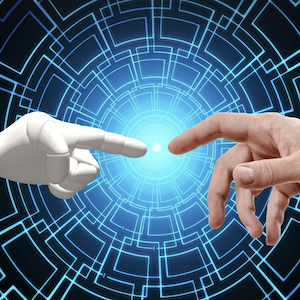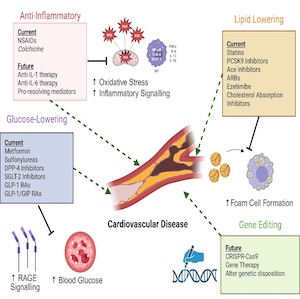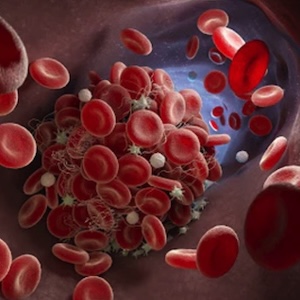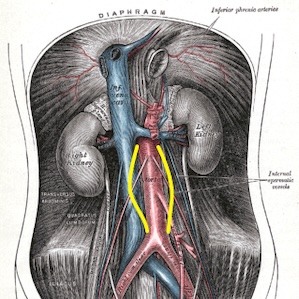Reviews
Vol. 2 No. 4 (2023)
Artificial intelligence and machine learning in hemostasis and thrombosis

Publisher's note
All claims expressed in this article are solely those of the authors and do not necessarily represent those of their affiliated organizations, or those of the publisher, the editors and the reviewers. Any product that may be evaluated in this article or claim that may be made by its manufacturer is not guaranteed or endorsed by the publisher.
All claims expressed in this article are solely those of the authors and do not necessarily represent those of their affiliated organizations, or those of the publisher, the editors and the reviewers. Any product that may be evaluated in this article or claim that may be made by its manufacturer is not guaranteed or endorsed by the publisher.
Received: 21 December 2023
Accepted: 28 December 2023
Accepted: 28 December 2023
2568
Views
529
Downloads
Similar Articles
- Rosina Albisinni, Tommaso Marrazzo, Arta Karruli, Sabrina Manduca, Giuseppe Nobile, Nicola Galdieri, Marisa De Feo, Successful treatment of aortic arch mural thrombosis with low-dose, ultra-slow-flow thrombolysis: a case report and literature review , Bleeding, Thrombosis and Vascular Biology: Vol. 1 No. 3 (2022)
- Kartik Akkihal, Thomas Varkey, James Kelbert, The use of creatine and the development of deep vein thrombosis. A scoping review , Bleeding, Thrombosis and Vascular Biology: Vol. 3 No. 3 (2024)
- Robert Parambi, Nicole Ziliotto, Francesco Bernardi , Marcello Baroni , Richard W Browne , Dejan Jakimovski, Bianca Weinstock-Guttman, Robert Zivadinov, Murali Ramanathan, Crosstalk between hemostasis inhibitors and cholesterol biomarkers in multiple sclerosis , Bleeding, Thrombosis and Vascular Biology: Vol. 1 No. 3 (2022)
- Maria J. Fernandez Turizo, Rushad Patell, Jeffrey I. Zwicker, Identifying novel biomarkers using proteomics to predict cancer-associated thrombosis , Bleeding, Thrombosis and Vascular Biology: Vol. 3 No. s1 (2024)
- Matteo Guarascio, Gerardo Nicola Pititto, Alessia Abenante, Marco Paolo Donadini, Distal deep vein thrombosis: is there a way out of this dark forest? , Bleeding, Thrombosis and Vascular Biology: Vol. 3 No. 2 (2024)
- Niccolò Bitto, Vincenzo La Mura, Anna Ludovica Fracanzani, Armando Tripodi, Is non-alcoholic fatty liver disease a prothrombotic risk factor? , Bleeding, Thrombosis and Vascular Biology: Vol. 2 No. 2 (2023)
- Gualtiero Palareti, Paolo Prandoni, Cristina Legnani, Emilia Antonucci, Serena Zorzi, Alberto Tosetto, Lorenza Bertù, Sophie Testa, Vittorio Pengo, Walter Ageno, Ida Martinelli, Benilde Cosmi, Eugenio Bucherini, Daniela Poli, Rationale and design of a study on D-dimer use to stratify patients after a first unprovoked venous thromboembolism for their risk of recurrence: extended low-dose Apixaban given only to patients with positive D-dimer results , Bleeding, Thrombosis and Vascular Biology: Vol. 1 No. 1 (2022)
- Mosaad Almegren, Clinical and radiological characteristics of cerebral vein thrombosis: a retrospective study , Bleeding, Thrombosis and Vascular Biology: Vol. 2 No. 3 (2023)
- Mehrie H. Patel, Alok A. Khorana, New drugs, old problems: immune checkpoint inhibitors and cancer-associated thrombosis , Bleeding, Thrombosis and Vascular Biology: Vol. 3 No. s1 (2024)
- Cristina Legnani, Michela Cini, Sophie Testa, Alberto Tosetto, Claudia Dellanoce, Stefania Bellesso, Giuseppe Carli, Ilaria Nichele, Laura Lissandrini, Serena Zorzi, Emilia Antonucci, Gualtiero Palareti, Evaluation of Coaguchek® Pro II coagulation testing device performance to assess direct oral anticoagulant action. The DOAC-CHECK study , Bleeding, Thrombosis and Vascular Biology: Vol. 1 No. 3 (2022)
You may also start an advanced similarity search for this article.














